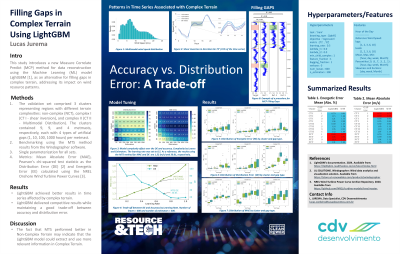Back

Filling Gaps in Complex Terrain Using LightGBM
Tuesday, October 1, 2024
5:00 PM – 6:00 PM MST
Location: Regency D


Lucas M. Jurema
Data Specialist
Casa dos Ventos
Eusébio, Ceara, Brazil
Poster Presenter(s)
Poster Description: Modeling time series in complex terrains is a growing challenge due to the impact of terrain on wind resource patterns, such as diurnal profile, inverted shear, high veers, and multimodal distributions. This significantly affects Measure Correlate Predict (MCP) methods for long-term extrapolation or reconstruction. Most methods discussed are statistical and deterministic, known as classical methods. There is a scarcity of literature on MCP methods utilizing Machine Learning (ML), especially in providing detailed comparisons between classical and ML-based methods. This study introduces a new MCP method for reconstruction using the ML model LightGBM, aiming for improved results in measurements affected by terrain complexity. The validation set comprised three clusters representing regions with different terrain complexities: non-complex, complex I (shear inversion), and complex II (Multimodal Distribution). The clusters contained 9, 9, and 4 metmasts, respectively, with 4 types of artificial gaps (1, 10, 100, 1000 hours) per metmast. Benchmarking, using the results of the MTS method from the Windographer software as a reference, highlighted the proposed ML model's ability to deliver superior results in complex terrains and for longer data gaps.
